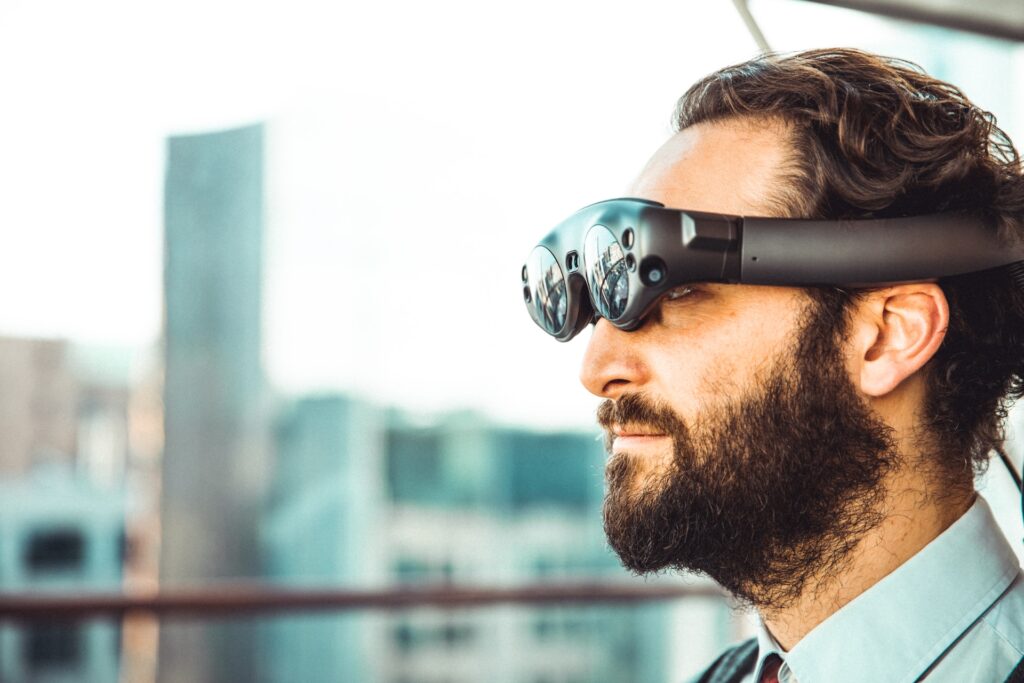Augmented Reality: Bridging the Gap Between Virtual and Real Worlds

In recent years, technology has taken significant strides, transforming the way we perceive and interact with the world around us. Augmented Reality (AR), once confined to the realms of science fiction, has now become a tangible and revolutionary force in our daily lives. This transformative technology has the potential to reshape various industries and enhance our experiences in ways previously unimaginable. In this article, we will explore what Augmented Reality is, its key features, applications, and its impact on our future.
Defining Augmented Reality
At its core, Augmented Reality is a technology that overlays digital elements, such as images, videos, or information, onto the real-world environment. Unlike Virtual Reality (VR), which creates entirely immersive artificial environments, AR enhances the real-world experience by blending virtual content seamlessly with the physical world. This integration is achieved through a combination of sophisticated hardware, software, and sensors that accurately track the user’s position and orientation in real-time.
Key Features of Augmented Reality
- Real-time interaction: AR applications provide users with the ability to interact with virtual elements in real-time, allowing for a dynamic and immersive experience.
- Contextual awareness: AR systems are designed to understand and analyze the surrounding environment, enabling them to adapt and align virtual content with the physical space seamlessly.
- Accessibility: AR technology is becoming increasingly accessible to the masses, thanks to the prevalence of smartphones and affordable AR-enabled devices.
- Versatility: Augmented Reality finds applications across various industries, including gaming, education, healthcare, retail, manufacturing, and marketing, among others.
Applications of Augmented Reality
- Entertainment and Gaming: Augmented Reality has revolutionized the gaming industry, introducing interactive and engaging experiences that bridge the gap between virtual and real worlds. Popular games like Pokémon GO and Minecraft Earth have demonstrated the immense potential of AR in entertainment.
- Education and Training: AR is transforming the way we learn by providing interactive and immersive educational experiences. It allows students to visualize complex concepts, explore historical sites virtually, and participate in realistic simulations for skill training.
- Healthcare: AR is making significant contributions to the healthcare sector, assisting surgeons with precise navigation during complex surgeries, aiding medical students in studying anatomy, and helping patients understand their diagnoses better through interactive visualizations.
- Retail and Marketing: AR is reshaping the retail landscape by enabling customers to virtually try on products, visualize furniture in their homes before purchase, and providing engaging brand experiences through interactive advertisements.
- Navigation and Wayfinding: AR-powered navigation apps provide real-time directions, points of interest, and contextual information, making it easier for users to navigate unfamiliar places.
The Future of Augmented Reality
As technology continues to advance, Augmented Reality is poised to become an integral part of our daily lives. Future developments in AR will likely focus on improving the realism and interactivity of virtual elements, reducing hardware constraints, and enhancing accessibility. With the advent of 5G networks and the proliferation of wearable AR devices, the potential for AR adoption is boundless.
Conclusion
Augmented Reality represents a groundbreaking fusion of the physical and digital worlds, revolutionizing the way we perceive reality and interact with technology. Its applications span across various industries, enriching entertainment, education, healthcare, retail, and navigation experiences. As AR technology continues to evolve, its impact on society will undoubtedly grow, ushering in a new era of seamless integration between the virtual and real worlds. The future holds endless possibilities for Augmented Reality, making it one of the most exciting and transformative technologies of our time.

